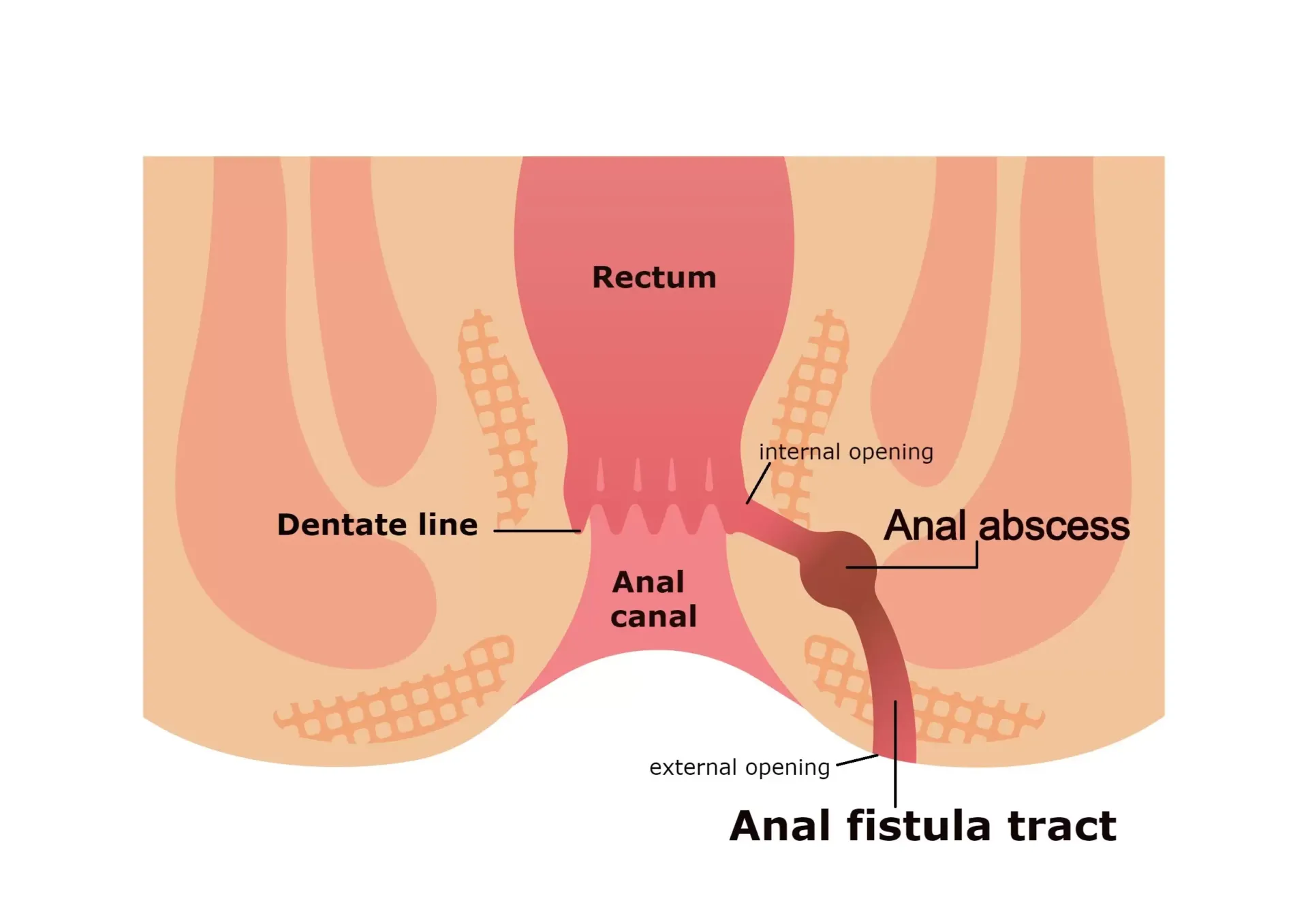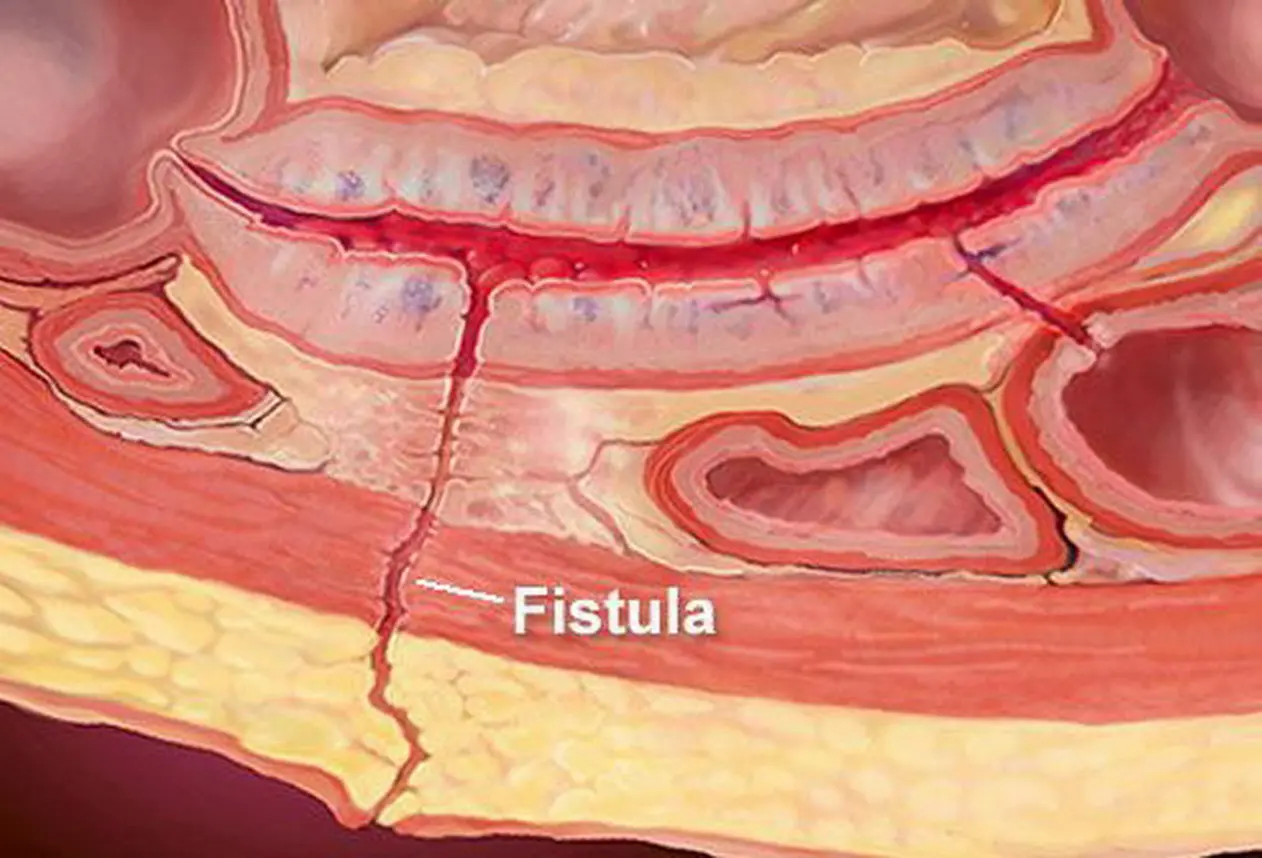
Contents
- What Is a Fistula?
- Causes of Anal Fistula
- Symptoms of Anal Fistula
- Difference Between Anal Fistula and Anal Fissure
- Diagnosis of Anal Fistula
- Treatment Options for Anal Fistula
- Connection Between Anal Abscess and Fistula
- What Is a Perianal Fistula?
- Cost of Anal Fistula Treatment
- Frequently Asked Questions (FAQ)

Anal fistula is a medical condition where an abnormal tunnel forms between the skin around the anus and the rectum. It commonly develops following a perianal abscess or infection and can significantly reduce a patient's quality of life due to pain, discharge, and hygiene issues. With early diagnosis and appropriate treatment, an anal fistula can be permanently resolved. This article covers everything you need to know about anal fistulas, from symptoms to treatment options.
What Is a Fistula?
In general terms, a fistula is an abnormal connection between two body cavities or between a body cavity and the skin. An anal fistula is a tunnel-like structure that connects the inner part of the anus or rectum to the skin, often causing continuous discharge.
Causes of Anal Fistula
- Anal fistulas commonly occur due to:
- Untreated or unresolved anal abscess
- Inflammatory bowel diseases like Crohn’s disease
- Tissue damage following radiation therapy
- Trauma to the anal region
- Persistent infections
The perianal fistula type is known for causing repeated abscesses and persistent discharge around the anus.

Symptoms of Anal Fistula
- Recurrent abscess formation around the anus
- Constant foul-smelling discharge from the anal opening
- Pain, swelling, and tenderness near the anus
- Pain during bowel movements
- Redness and irritation around the anus
Patients experiencing these symptoms should consult a colorectal surgeon or general surgery specialist for proper evaluation.
Difference Between Anal Fistula and Anal Fissure
| Feature | Anal Fissure | Anal Fistula |
|---|---|---|
| Definition | A small tear near the anus | An infected tunnel between anus and skin |
| Main Symptom | Severe pain, fresh blood | Persistent discharge, possible abscess |
| Cause | Hard stools, constipation | Typically post-abscess |
| Treatment | Medication, Botox, or surgery | Generally surgical |
While often confused, an anal fissure is a superficial tear that usually causes sharp pain and bleeding, whereas an anal fistula is a deeper infected tract that leads to ongoing discharge and may require surgical intervention.
Diagnosis of Anal Fistula
- Diagnosis typically involves:
- Physical examination
- Digital rectal exam
- Anoscopy
- Imaging methods like MRI or endoanal ultrasound
Once diagnosed, the fistula is classified as simple or complex, and the treatment plan is tailored accordingly.
Treatment Options for Anal Fistula
Anal fistulas do not heal on their own and always require surgical treatment. Options include:
1. Fistulotomy
The most common procedure for simple fistulas. The tract is surgically opened to heal from the inside out.
2. Seton Technique
Used for complex fistulas. A special thread (seton) is placed in the tract to allow for drainage and gradual healing.
3. LIFT (Ligation of Intersphincteric Fistula Tract)
A modern, sphincter-preserving method that involves tying off and closing the fistula tract between the sphincter muscles.
4. Postoperative Recovery
Healing time varies based on fistula complexity and the procedure used, typically ranging from 2 to 6 weeks. Strict adherence to postoperative care helps minimize complications.
Connection Between Anal Abscess and Fistula
An anal abscess is a collection of pus near the anus. If not fully drained or properly treated, it may progress to form a fistula. Prompt management of anal abscesses is crucial to prevent such complications.
What Is a Perianal Fistula?
A perianal fistula is a type of anal fistula located in the perianal area—between the skin and rectum. It is frequently associated with chronic inflammatory diseases like Crohn’s disease and often requires advanced surgical treatment.
Risks of Delayed Treatment
Untreated anal fistulas may lead to:
- Recurrent abscess formation
- Spread of infection to surrounding tissues
- Damage to anal sphincter muscles
- Chronic pain and persistent discharge
- Rarely, increased risk of malignancy
Early diagnosis and surgical intervention by a specialist are key to avoiding long-term complications.
Cost of Anal Fistula Treatment
Treatment costs depend on the fistula type, its complexity, and the patient's overall health. Contact our clinic for a personalized treatment plan and detailed cost estimate.

Frequently Asked Questions (FAQ)
Is surgery always necessary for fistula treatment?
Yes. Anal fistulas do not heal without surgical intervention.
How long does it take to recover after fistula surgery?
Most patients fully recover within 2 to 6 weeks, depending on the procedure.
Does every anal abscess result in a fistula?
No, but untreated or improperly treated abscesses significantly increase the risk.
Can an anal fistula recur?
While recurrence is rare with proper surgical technique, complex fistulas may have a higher recurrence rate.
Are anal fissure and fistula the same?
No. An anal fissure is a surface-level tear, while an anal fistula is a deeper infected tract requiring different treatment.
![dr.leyla-arvas-800×1000.jpg[1] dr.leyla arvas](https://www.quartz.com.tr/wp-content/uploads/2024/11/dr.leyla-arvas-800x1000.jpg1_.webp)
Author : Op. Dr Leyla ARVAS
Dr Leyla Arvas is an internationally recognised specialist in aesthetic surgery based in Istanbul. Graduated in 1998 from Istanbul University Faculty of Medicine, she has developed her expertise by studying in Taiwan, Japan and Spain during her 20 years of experience.
This article December 2, 2025 was updated on
Editor: admin@quartz.com.tr


